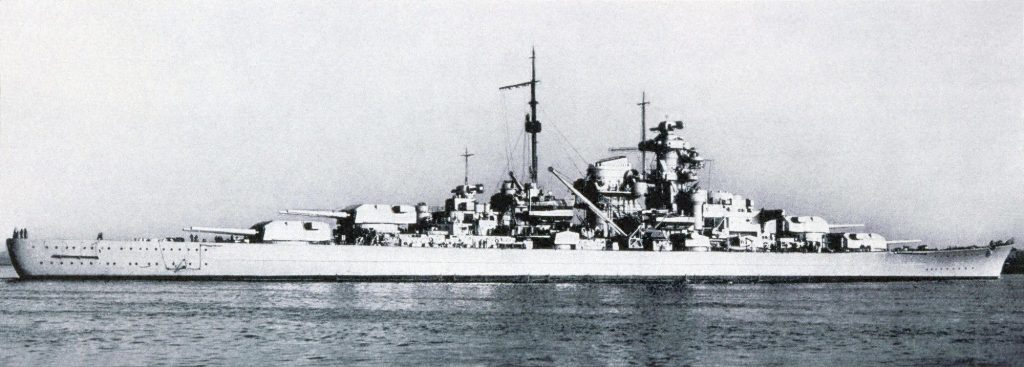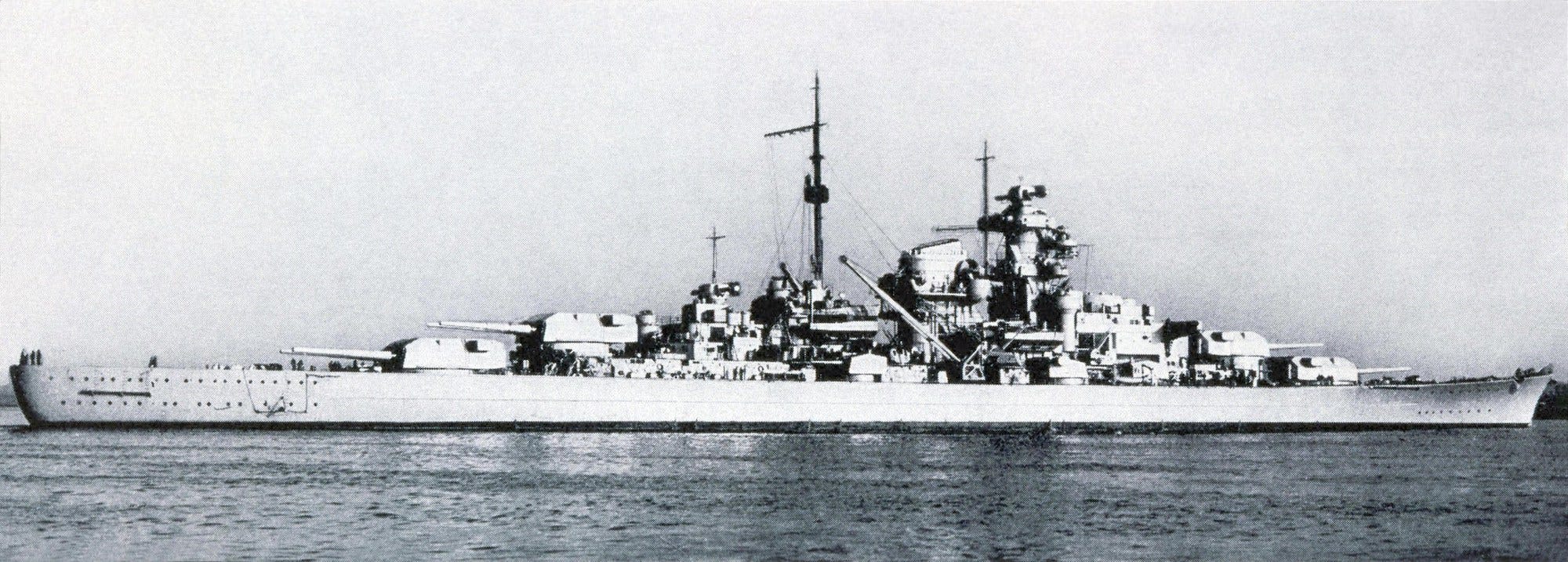
Photo12/Universal Images Group via Getty Images
- Early in World War II, Nazi Germany used its navy to isolate Britain from resupply by sea.
- Germany capital ships, like the battleship Bismarck, were an important part of that strategy.
- But it was Bismarck's destruction in May 1941 that solidified U-boats as Hitler's weapon of choice.
- See more stories on Insider's business page.
On the night of May 18, 1941, the German heavy cruiser Prinz Eugen steamed out of its base at Gotenhafen (now Gdynia, Poland), followed five hours later by the Kriegsmarine's crown jewel, the battleship Bismarck.
Bismarck and Prinz Eugen were on a mission to wreak havoc on British merchant shipping. German U-boats were already very effective at this, but Grand Adm. Erich Raeder, head of the Kriegsmarine, hoped to demonstrate to Hitler the value of Germany's surface fleet in order to avoid future budget cuts.
What followed was one of the most intense naval searches in military history, the result of which convinced Hitler that U-boats, not capital ships, were the Kriegsmarine's best weapons.
Capital ships for commerce raiding
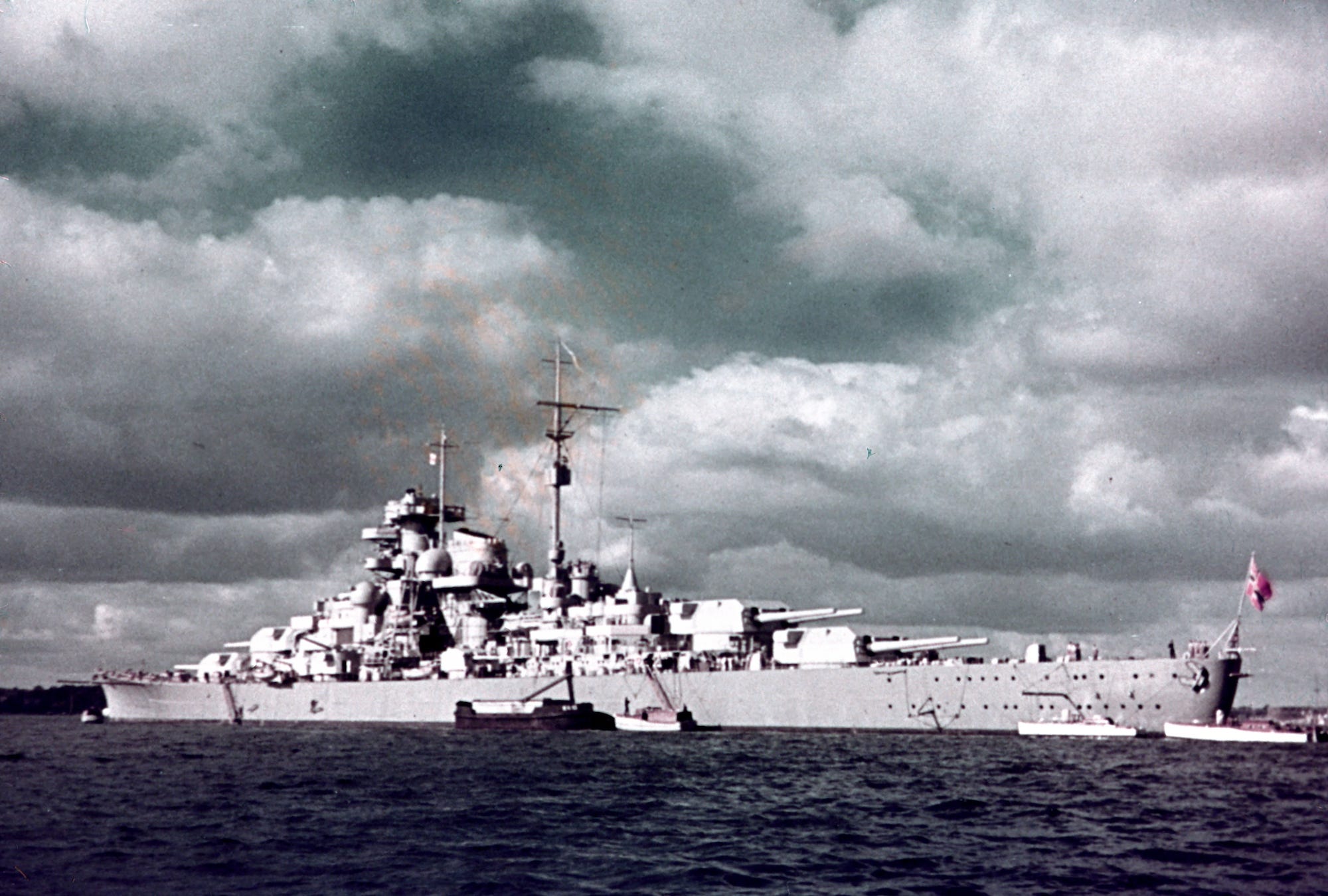
Sobotta/ullstein bild via Getty Images
Britain was in a very desperate situation in May 1941. It had fended off the Luftwaffe's relentless aerial onslaughts in the Battle of Britain but was still isolated and heavily reliant on supplies coming across the Atlantic.
The Kriegsmarine had been trying to block trans-Atlantic shipping routes since the war began, and its capital ships had played an important role in intercepting or sinking Allied shipping.
German surface ships also drew Royal Navy warships away from other duties, such as escorting convoys, and supported U-boats, which were then few in number.
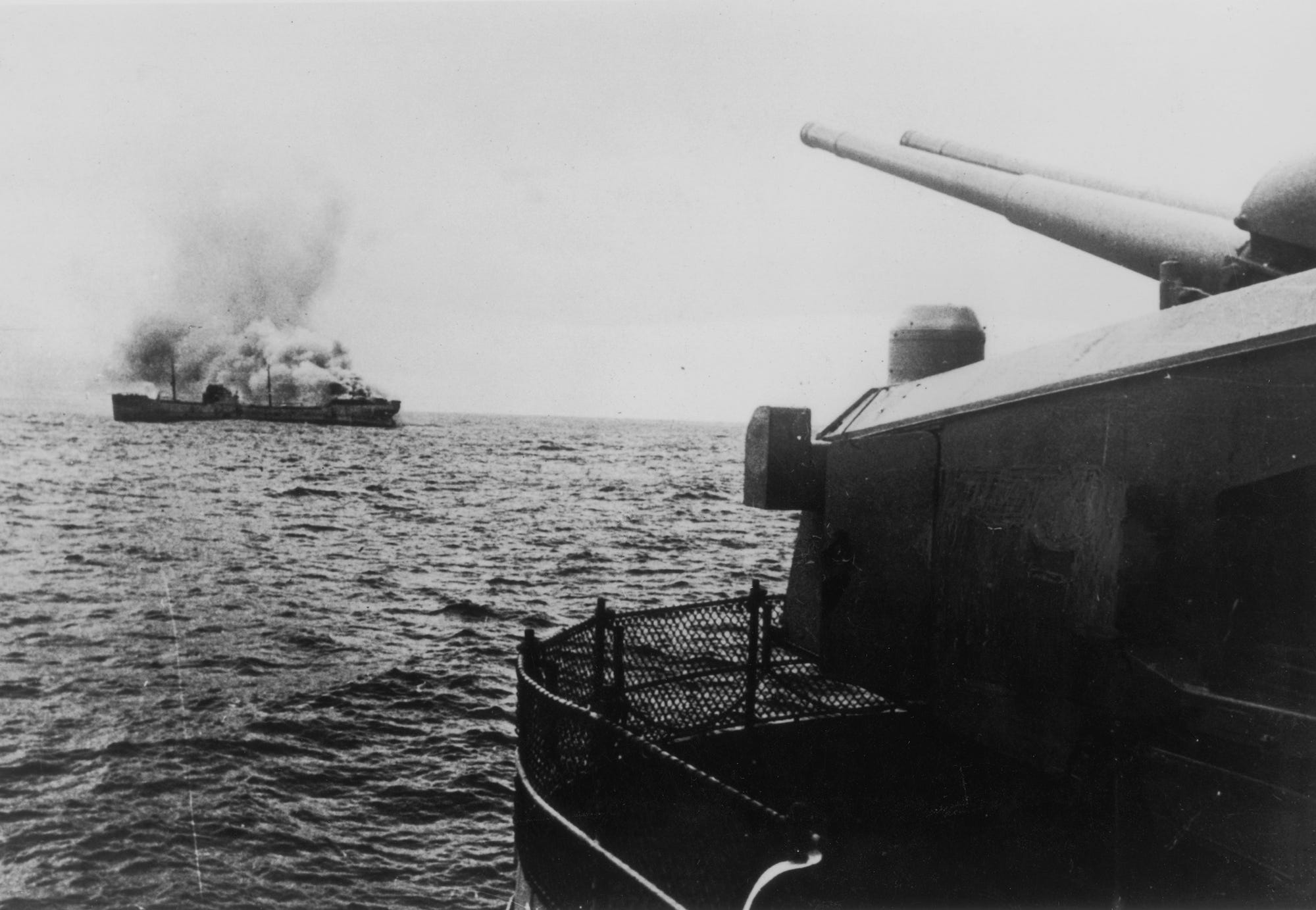
Keystone/Getty Images
Happy with earlier success in Operation Berlin, Raeder planned another commerce raid.
To maximize damage, the raid was to include Germany's four best capital ships: battleships Scharnhorst and Gneisenau, which were sister ships, and Bismarck and its sister ship, Tirpitz.
But Scharnhorst and Gneisenau were damaged by constant RAF attacks while being repaired in port in France, keeping them out of action for months. Tirpitz's crew was also still being trained.
Prinz Eugen, not as well armed or armored as a battleship, was the only available ship capable of accompanying Bismarck. Not wanting to delay the operation any longer, German commanders ordered the ships into the Atlantic.
Battle of the Denmark Strait
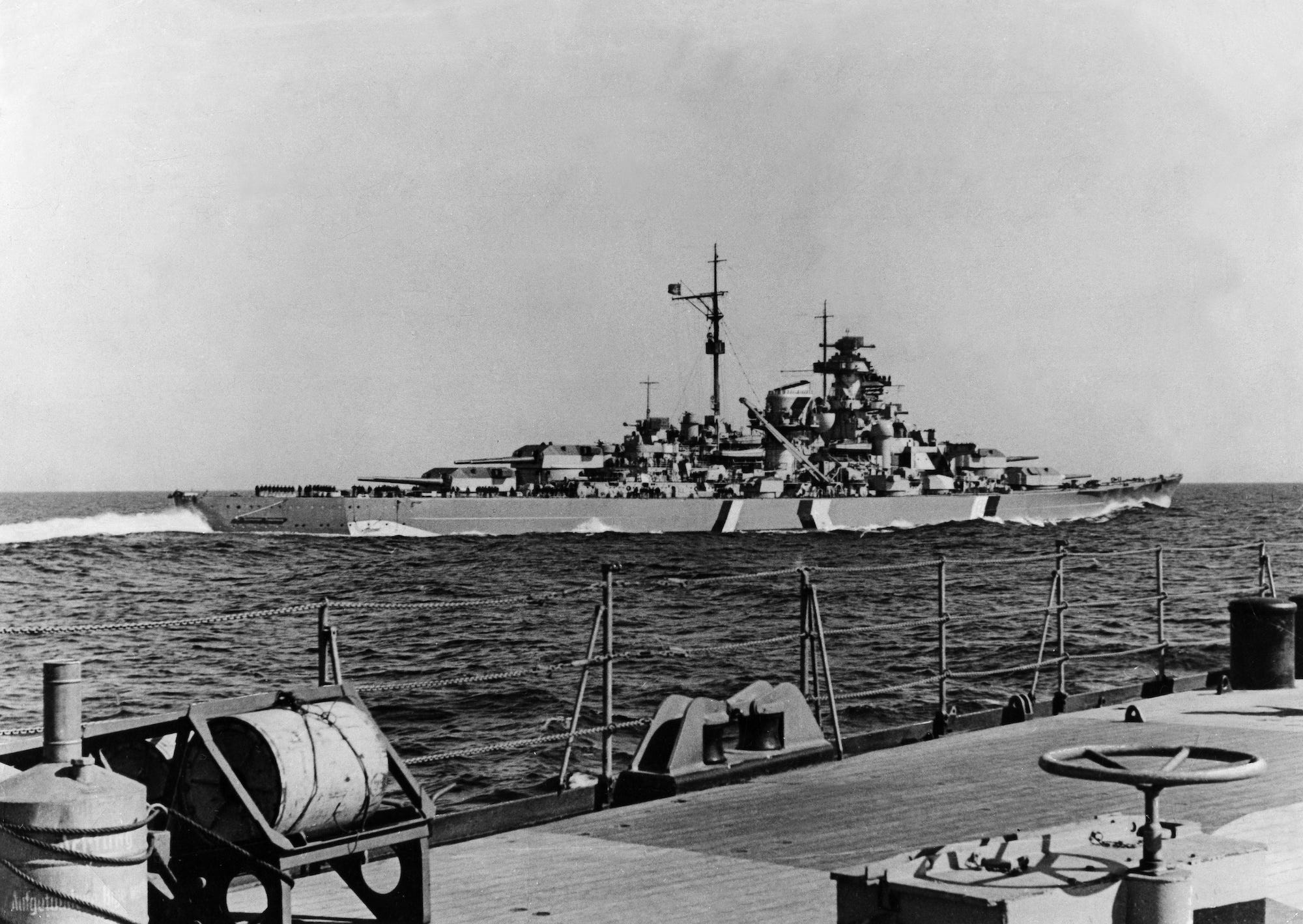
ullstein bild/ullstein bild via Getty Images
The mission, codenamed Operation Rheinübung, was led by Adm. Günther Lütjens, the commander of Operation Berlin.
Lütjens was ordered to focus primarily on merchant raiding and to avoid fighting British capital ships if possible. But Bismarck and Prinz Eugen were discovered by the Royal Navy, which attempted to intercept the ships as they sailed through Denmark Strait and into the Atlantic on May 24.
The British force consisted of the battleship HMS Prince of Wales and the battlecruiser HMS Hood, which was widely considered the pride of the Royal Navy.
The British ships were no match for Bismarck, which was newer and better armored. Bismarck and Prinz Eugen were able to fire full broadsides at the two British ships.
"When the big guns fired, the entire ship staggered," Heinrich Kuhnt, a sailor on the Bismarck, recalled after the war. "It felt like it was bending. It was pushed sideways in the water. It was amazing."
Minutes into the battle, one of Bismarck's 15-inch shells hit one of Hood's magazines. An enormous column of fire erupted from the battlecruiser, followed by a massive explosion that tore it in two.
"The ship broke into pieces," Otto Schlenzka, a sailor on Prinz Eugen, recalled. "We were sure an explosion of that kind must have killed everybody."
Hood went down with 1,415 sailors, all but three of its crew. Prince of Wales was also heavily damaged and had to withdraw. The Germans suffered no losses.
Bismarck's end
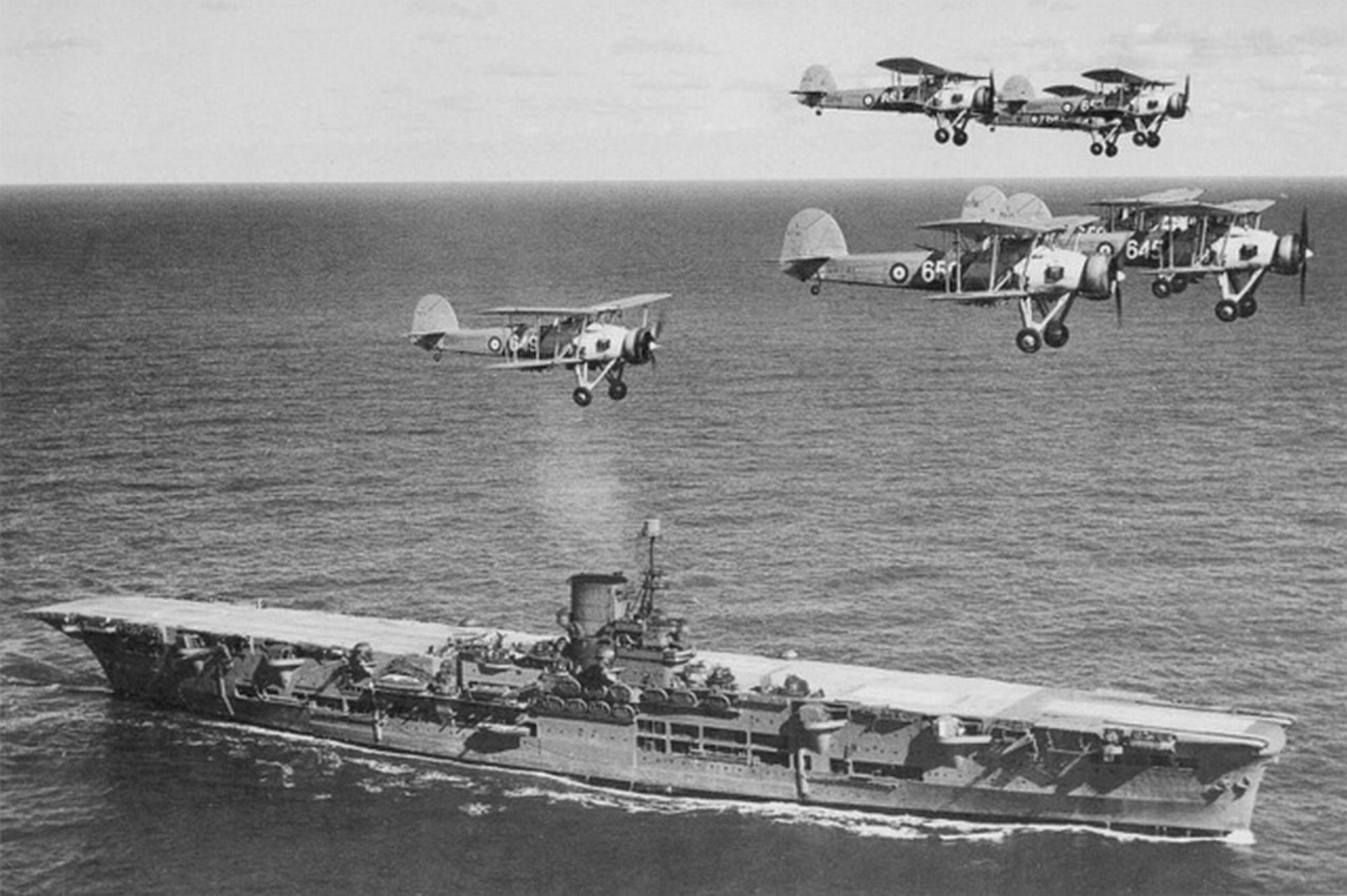
British Royal Navy
Shocked by the violent destruction of the Hood, the Royal Navy committed nearly all of its available capital ships in the area to finding and destroying Bismarck.
Though it suffered no casualties in the battle, Bismarck received a number of hits that ruptured a fuel tank and caused flooding.
Lütjens, aware of the Royal Navy's numerical superiority and of the danger of sailing a damaged warship, terminated the operation.
Prinz Eugen was ordered to continue commerce raiding on its own while the Bismarck headed for Nazi-occupied France.
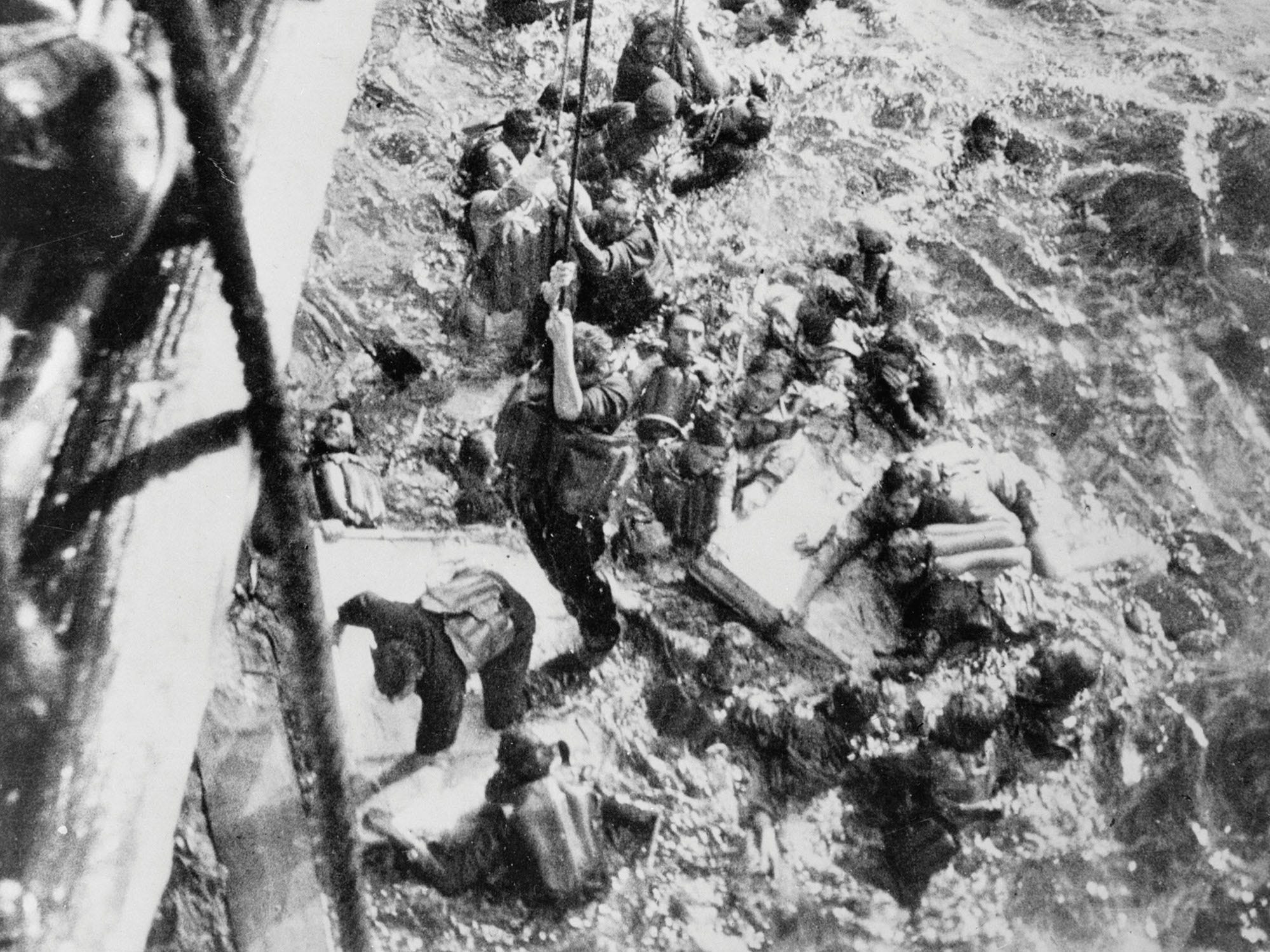
British Royal Navy
Bismarck briefly evaded its pursuers, but a British reconnaissance aircraft, flown by a US Navy pilot, found it on May 26.
Subsequent torpedo attacks from Swordfish carrier planes disabled Bismarck's rudder, forcing it into a continuous turn.
With the Royal Navy closing in, Lütjens sent a final message to Berlin: "Ship unmaneuverable. We shall fight to the last shell. Long live the Führer."
On May 27, two British battleships and two heavy cruisers attacked Bismarck. They fired over 2,800 shells in a little less than two hours, hitting the German battleship some 400 times. Bismarck was left dead in the water.
The Germans detonated scuttling charges to sink the ship, while British heavy cruiser HMS Dorsetshire fired torpedoes to finish it off. Only 115 of Bismarck's 2,221-man crew survived.
U-boat superiority
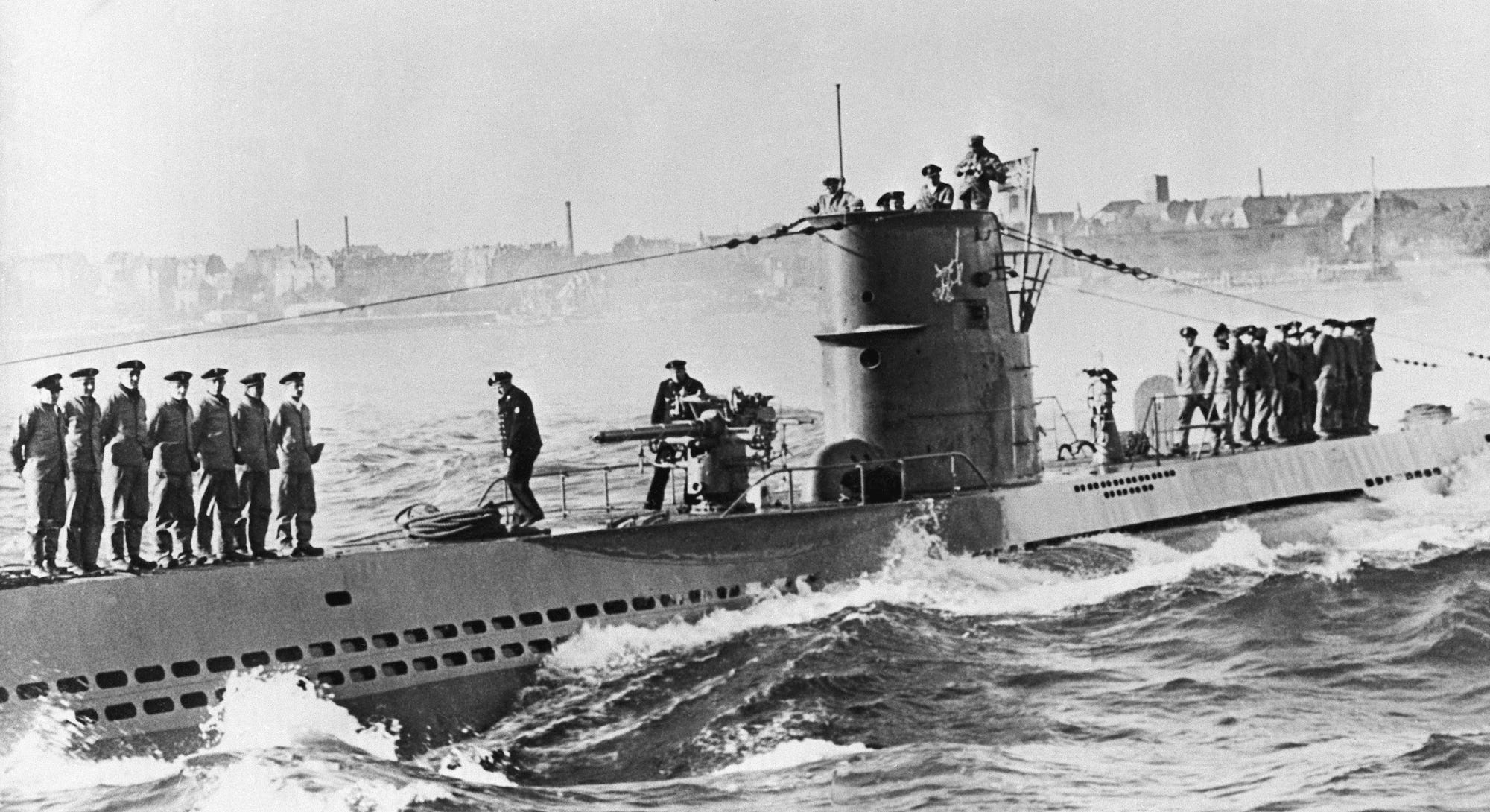
Bettmann/Getty Images
Operation Rheinübung was a complete failure. Not only had the pride of the Kriegsmarine been sunk with nearly all hands, Prinz Eugen was unable to sink any merchant ships, meaning the primary objective was never achieved.
In the following weeks, the Royal Navy set about destroying the network German ships that refueled, resupplied, and rearmed German capital ships in the Atlantic. The result was the Kriegsmarine's almost complete reliance on U-boats during the rest of the Battle of the Atlantic.
In the end, the U-boats were the Kriegsmarine's most effective weapons. From September to December 1939, they sank 110 Allied vessels, while German capital ships only sank about a dozen.
Between July and October 1940, a period known as the "first happy time," by German submariners, U-boats sank nearly 300 ships carrying over a million tons of cargo.
Between January and August 1942, the "second happy time," U-boats sank another 600 ships carrying 3 million tons of cargo.
Hitler never ordered his capital ships into the Atlantic again, sending them to Norway or the Baltic instead. The Germans ramped up production of U-boats, which were easier to build than capital ships, and thousands of Allied ships were sunk before the war's end in 1945.
